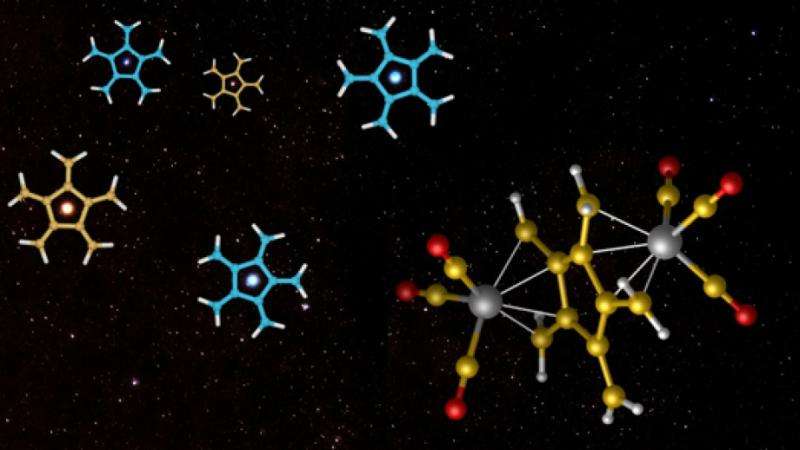Researchers have the chemistry to make a star

Chemists have created a star-shaped molecule previously thought to be too unstable to be made.
The team created the five-pronged molecule [5]radialene, in work that could lead to more efficient ways to make medicinal agents, said lead researcher, Professor Michael Sherburn from Research School of Chemistry.
"This proof that we can make a compound that so many people thought couldn't be made opens up a world of new possibilities," said Professor Sherburn, a synthetic chemist.
The chemical industry worldwide is worth nearly $1 trillion, making everything from cosmetics to cancer drugs. The vast majority of these substances contain rings like radialenes.
"Hyper-reactive molecules like radialenes form more stable substances very quickly. Their reactions are some of the most powerful chemical transformations known," Professor Sherburn said.
Professor Sherburn said that computations carried out on the Raijin supercomputer by collaborator Professor Michael Paddon-Row from UNSW gave the team the confidence to try to create the elusive molecule.
"The compound is 10,000 times less stable than the others in the star-shaped radialene molecule family, which are themselves notoriously unstable. A previous research group describes spontaneous combustion of [6]radialene in air," Professor Sherburn said.
Professor Sherburn and three generations of PhD students took nearly two years to develop a method to create [5]radialene.
Success came by preparing the molecule as a crystalline metal complex, which is stable because the metal shields the molecule from reaction. It also let the students use an X-ray technique to confirm their structure was correct. With the metal taken away, [5]radialene lives for only minutes, even in very dilute solution at low temperature.
"Because the structure [5]radialene had never been seen in nature, we had to come up with a really creative method, something new and special," Professor Sherburn said.
"It was quite a day when the PhD students brought the X-ray crystal structure to me."
Professor Sherburn said the blue-sky nature of the research means it is impossible to predict the uses of the new techniques.
"We will always try to push back the boundaries of what is known, and what is thought to be possible," he said. "We have related projects underway that, if they succeed, will re-write the text books."
The research is published in the Journal of the American Chemical Society.
More information: Emily G. Mackay et al. [5]Radialene, Journal of the American Chemical Society (2015). DOI: 10.1021/jacs.5b07445
Journal information: Journal of the American Chemical Society
Provided by Australian National University


















